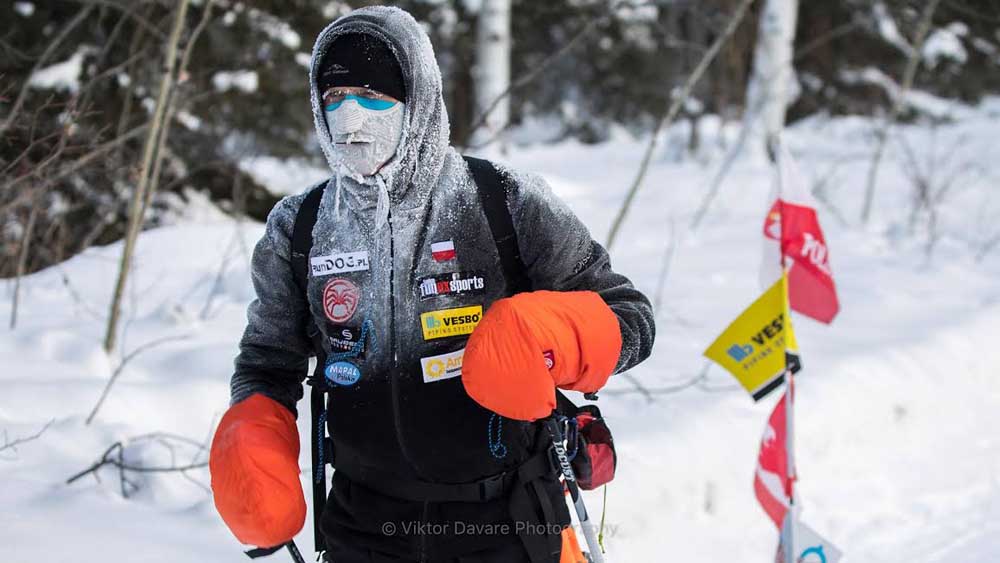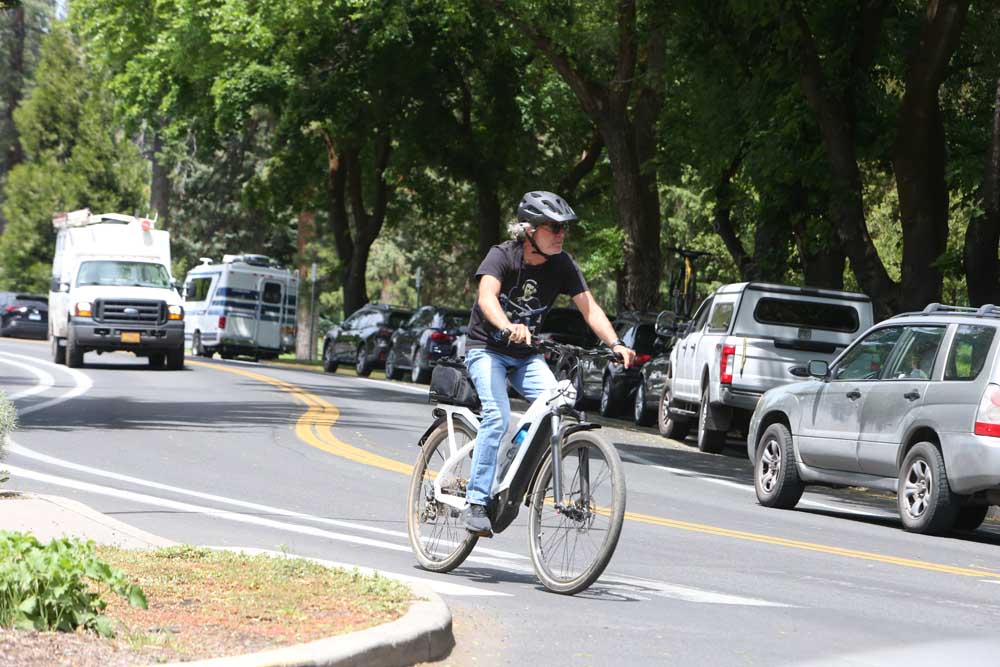A Polish ultrarunner’s 946-mile journey across Alaska
Published 5:56 am Thursday, April 20, 2017

- Micha<0142> Kie<0142>basi<0144>ski pulls his sled between Pelly Crossing and Pelly Farm (Photo courtesy Viktor Davare)
Michał Kiełbasinski was well aware no one expected him to succeed on his mission to run the 946-mile Yukon Quest trail this year.
The 49-year-old Polish adventurer spent 32 days this winter running between Whitehorse, Yukon and Fairbanks — most of it on the sled dog race trail. The skeptics included the doctor who operated on his knees a year ago and Yukon Quest mushers who passed him along the trail, he said. His trip seemed particularly precarious because of the results of his previous Yukon expedition. Kiełbasinski suffered serious frostbite that almost cost him several fingers and toes during a 2015 trail run.
Nonetheless, Kiełbasinski arrived in downtown Fairbanks on March 4 with all 10 fingers and 10 toes intact and only surface-level cold damage to the skin of his nose.
“It was hard. It was difficult. It was a once-in-a-lifetime adventure,” Kiełbasinski said in a video he recorded at the finish line. He looks a bit surprised himself that he’s arrived in Fairbanks.
“And I’m glad I’m here. I’m happy that I finished it. I’m sad that I finished it, and I’m very tired,” he said.
Kiełbasinski’s route followed the Yukon Quest International Sled Dog Race trail from Whitehorse to Circle and followed the Steese Highway from Circle to Fairbanks because the Yukon Quest trail markers had been pulled up by the time he reached the Alaska road system. The complete distance of his trip totaled about 900 miles.
Running for the dogs
Kiełbasinski is an accomplished adventure racer who began running ultramarathons in 2011. He decided to run the entire Yukon Quest trail in 2015 when he got out of the hospital in Whitehorse after receiving treatment for frostbite. That year, Kiełbasinski was attempting to run half of the Yukon Trail on the Montane Yukon Arctic Ultra from Whitehorse to Dawson City.
While he was in Whitehorse, Kiełbasinski was inspired by a statue of a Yukon man with a dog. He decided he wanted to come back to the Yukon and run 1,000 miles as a benefit for animal shelters in Poland. He thought of his run as kind of a reverse sled dog race.
“I was thinking about this history. This sled race is now fun, it’s sport. But your ancestors wouldn’t survive without dogs,” he said. “The dogs were running for humans. Now it’s time to reverse the situation. Now human will run for the dogs.”
Along his journey, Kiełbasinski asked people to donate to “Fundacja Przyjaciele Braci Mniejsi” the Polish government’s dog and cat rescue organization. By the end of his run, he had raised about $5,000 in donations to the organization, according to Viktor Davare, a Canadian photographer who was Kiełbasinski’s one-man support crew at checkpoints along the road system.
Kiełbasinski said he was disappointed the Yukon Quest race organization didn’t officially sanction his run, especially considering the dog-related benefit.
The Alaska-side Yukon Quest Executive Director Marti Steury said supporting human-powered runners goes beyond the organization’s mission as a sled dog race.
“We love the idea that people are going on the trails that we’ve groomed and that we have them there to explore the Alaska wilderness,” she said. “But it’s not something that we support in conjunction with us.”
As far as Kiełbasinski knows, he’s the first person to run from Whitehorse to Fairbanks in the winter.
“I was researching if I can ask anyone who had made it, but it was like a story about Sasquatch,” he said “They say that somebody knew somebody who knew somebody who heard somebody did it. But nobody can show (they did it). But now you’ve got this proof … this is the first documented run on foot.”
Learning on the trail
Kiełbasinski left Whitehorse on Feb. 1, three days before the start of the sled dog race.
Kiełbasinski was running most of the way, but with a 60-pound sled behind him, his pace was a 2 to 3 mph trudge. The sled dog teams passed him between Whitehorse and Dawson City.
“The three most common words from the mushers, from people I’ve met, were ‘You are crazy,’” he said. “When they look at my shoes, the Salomon running shoes, they couldn’t believe. ‘How can you run with this in minus-40?’”
Kiełbasinski said the hardest point of his run was Eagle Summit, the most daunting section for most Yukon Quest dog mushers as well. Kiełbasinski crossed the mountains while running on the Steese Highway instead of the dog mushing trail, but nonetheless the wind made it difficult to stand up, he said.
On his journey, Kiełbasinski slept in cabins or wall tents where he could find northern hospitality. He spent about 10 nights sleeping outside with his sleeping bag on his sled. As he traveled, he got better at finding ways to keep warm. After frostbite to his nose early in the trip, he wore a layer of blue frost tape on his face.
On 40-below days, it sometimes took him 30 minutes to put on or take off overboots because his hands were so numb. He stopped frequently to do rapid arms circles to restore blood flow, he said.
One of the most important lessons was staying calm, even in the many remote sections of the trail where he knew if he summoned help with his satellite phone it would likely come too late.
“I knew that to survive I can’t panic. I have to solve the problem, not to make it bigger,” he said.
“The three most common words from the mushers, from people I’ve met, were ‘You are crazy.’”— Ultrarunner Michał Kiełbasinski






